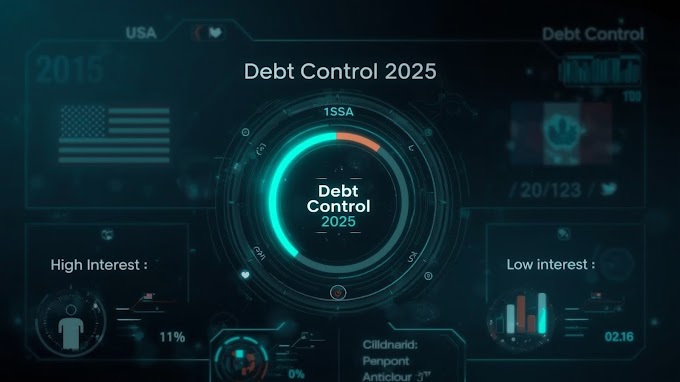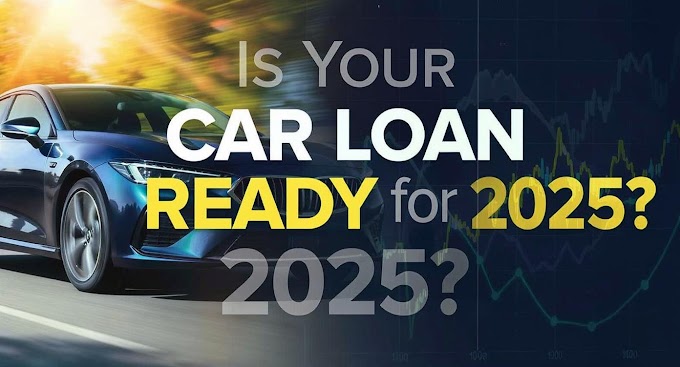2025 Global Auto Finance Market
A Guide to Auto Loans & A Tri-Nation Analysis of Policy, Risk, and Digital Transformation
📖 Understanding Auto Loans
An auto loan is a secured loan that a borrower uses to purchase a vehicle. The vehicle itself serves as collateral for the loan. The borrower agrees to repay the borrowed amount, plus interest, in fixed monthly payments over a predetermined period (the loan term). This section provides a foundational overview of auto loans before you explore the specific market trends.
✅ Advantages
- Immediate Ownership: Allows you to buy a car you couldn't afford to purchase outright with cash.
- Builds Credit History: Making timely payments can positively impact your credit score over time.
- Predictable Payments: Fixed monthly payments make it easy to budget your transportation costs.
- Access to Better Vehicles: Financing can make newer, safer, and more reliable cars accessible.
❌ Disadvantages
- Total Cost is Higher: You pay more than the car's sticker price due to interest charges.
- Depreciation Risk: The car's value drops over time, and you might owe more than it's worth (negative equity).
- Long-Term Debt: A loan is a multi-year financial commitment that can impact your ability to borrow for other things.
- Risk of Repossession: If you fail to make payments, the lender can take the vehicle back.
Where to Get an Auto Loan & Which Platform is Best?
The "best" platform depends on your priorities: lowest rate, convenience, or personalized service. It's crucial to get pre-approved from multiple sources before visiting a dealership to have the most negotiating power.
Banks & Credit Unions
Best for borrowers with established credit and an existing relationship. Credit unions often offer highly competitive rates and personalized service. Getting pre-approved here before shopping is a smart move.
Dealership Financing
Best for convenience and access to special manufacturer promotions (like 0% APR). The dealer acts as an intermediary, sending your application to multiple lenders. Always compare their offer to your pre-approval.
Online Lenders & Fintech
Best for speed and comparing multiple offers at once. These platforms are often fully digital, providing fast decisions and catering to a wide range of credit profiles, including those who are "credit invisible."
� United States: Policy Shocks & Consumer Strain
This section explores the turbulent American auto finance market, defined by contradictory government policies like new tax deductions and sweeping tariffs. These forces collide with historic levels of consumer financial stress and the rapid rise of AI in lending, creating a landscape of targeted opportunities and systemic risks.
📈 Subprime Stress Test: Delinquencies Soar
A surge in 60+ day delinquencies to the highest levels in decades signals severe financial pressure on US consumers across all credit tiers, driven by high vehicle prices and soaring interest rates. The chart below contrasts the sharp rise in subprime delinquencies with the overall market trend, highlighting the growing risk.
🤖 The Rise of AI Lending
Lenders are rapidly adopting AI to automate and accelerate loan approvals. This delivers near-instant decisions for consumers and expands credit access to the "unbanked" by analyzing alternative data. However, it also raises challenges regarding implementation, bias, and data privacy, creating a new competitive frontier.
90% Faster Processing
AI automates data verification, reducing loan decision time from days to minutes.
Increased Accuracy
Algorithmic analysis minimizes human error and ensures consistent evaluation.
Expanded Credit Access
Alternative data helps assess "credit invisible" applicants fairly.
📜 Policy Deep Dive: Tax Deductions vs. Tariffs
Two major policies are creating conflicting pressures. A new tax deduction offers a niche benefit for buyers of US-made cars, while a 25% tariff on imports inflates prices for everyone, pushing consumers towards the used market and increasing long-term ownership costs.
Auto Loan Interest Deduction
- For new, US-assembled vehicles only.
- Requires taxpayer to itemize deductions.
- Capped at $10k interest/year, with income limits.
- Benefits a narrow segment of high-income buyers.
25% Import Tariff
- Adds ~$6,000 to average new car price.
- Projected to reduce new car sales by over 6%.
- Drives up cost of imported parts, raising repair and insurance costs.
- Pushes demand heavily towards the used car market.
🇨🇦 Canada: Regional Divides & Deepening Debt
This section examines the Canadian market, a tale of two economies with severe consumer strain concentrated in Ontario and BC. Explore how collapsing EV incentives, a paradoxical new vs. used financing market, and the rise of high-risk 84-month loans are defining Canada's auto finance challenges.
📍 Delinquency Hotspots: Ontario & BC
Non-mortgage delinquencies are surging in Canada, but the pain is not evenly distributed. Ontario and British Columbia are experiencing dramatic increases, far outpacing the national average and signaling deep economic fissures that require a region-specific approach to risk management.
⏳ The 84-Month Gamble
To maintain affordability, long-term loans (7+ years) are now common. This practice masks true cost and creates severe risks for consumers and lenders alike.
Higher Total Interest
A longer term means paying significantly more interest over the life of the loan, even with a lower monthly payment.
The Negative Equity Trap
Borrowers are "upside down" for longer, owing more than the car is worth, creating risk in case of accident or trade-in.
Outliving the Warranty
Payments continue for years after the factory warranty expires, leaving owners liable for expensive repairs.
🍃 The Fading Green Incentive
The financial case for EVs is weakening as crucial government incentives disappear. The federal iZEV program is paused, and key provinces like Quebec and BC are aggressively cutting or pausing their rebate programs, creating massive uncertainty and threatening national ZEV sales mandates.
| Program | Jurisdiction | 2025 Status | Change from 2024 |
|---|---|---|---|
| iZEV Program | Federal | Paused | Was up to $5,000 |
| Roulez Vert | Quebec | Phasing Out | $7,000 ➔ $4,000 |
| Go Electric | British Columbia | Paused | Was up to $4,000 |
🇫🇷 France: Green Mandates & Digital Acceleration
This section delves into the unique French market, where an aggressive "Bonus-Malus" environmental tax system is the single biggest factor shaping car sales. Discover how this powerful policy, combined with preferential green financing and a push for AI-driven online credit, is accelerating France's electric transition.
⚖️ The "Bonus-Malus" Gauntlet
France uses a powerful "stick and carrot" approach. The *Bonus Écologique* rewards EV buyers with a subsidy, while the *Malus Écologique* imposes severe, escalating taxes on higher-emission vehicles based on CO2 and weight. The Malus is now a primary cost component, often exceeding thousands of euros.
🌿 The "Green Loan" Advantage
French lenders amplify government policy by offering better interest rates for "green" vehicles. This creates a powerful "double incentive" for EV buyers (subsidy + cheaper loan) and a "double penalty" for buyers of conventional cars (tax + higher interest rate), as shown in the rate comparison below.
📱 L'Intelligence Artificielle & Digital Loans
The French auto loan experience is now almost entirely digital, powered by AI. The competitive edge is delivering the fastest, most convenient online journey from simulation to electronic signature, with AI handling risk assessment and fraud detection in the background to provide near-instant decisions.
Loan Simulation
Instantly explore different loan scenarios online.
AI-Powered Decision
Get an agreement-in-principle in minutes, not days.
Electronic Signature
Finalize the contract from anywhere, without paperwork.
.png)
.png)

.png)





Hi Please, Do not Spam in Comments